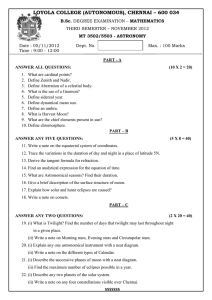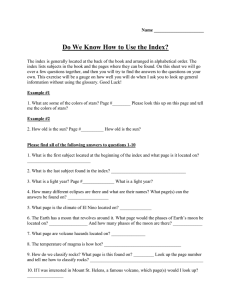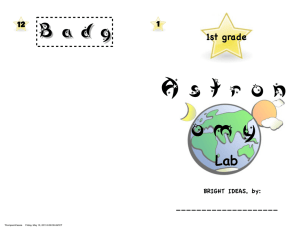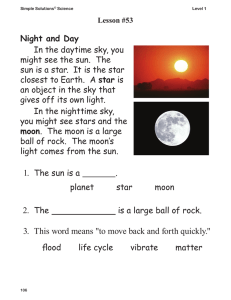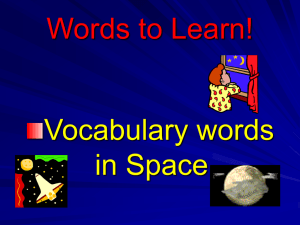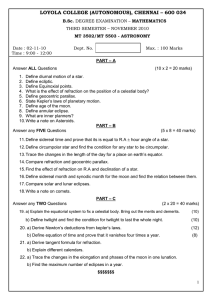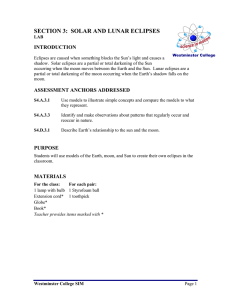Moon
advertisement
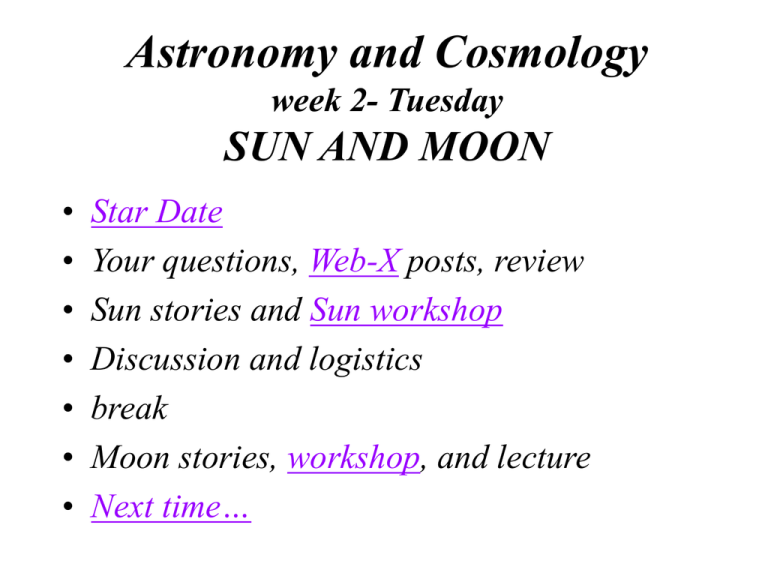
Astronomy and Cosmology week 2- Tuesday SUN AND MOON • • • • • • • Star Date Your questions, Web-X posts, review Sun stories and Sun workshop Discussion and logistics break Moon stories, workshop, and lecture Next time… Review of week 1: Space & Time 1. What role did astronomy play in ancient civilizations? 2. Are the stars that make up a constellation actually close to one other? 3. Are the same stars visible every night of the year? What is so special about the North Star? 4. Are the same stars visible from any location on Earth? 5. What causes the seasons? Why are they opposite in the northern and southern hemispheres? 6. Has the same star always been the North Star? 7. Can we use the rising and setting of the Sun as the basis of our system of keeping time? 8. Why are there leap years? Sun stories and Sun workshop Helios = Apollo’s chariot racing across the sky. Phaethon took it for a joyride… Stonehenge and Cahokia … measured solstices & equinoxes, but did not predict eclipses. Yucatan peninsula: solar zenith on 26 July first day of summer for the classical Mayan empire. 1. Edith Hamilton, Mythology, 131-132 2. Aveni and Krupp 3. Impey and Hartmann, The Universe Revealed, 36 Discussion and logistics • • • • • • Online quizzes WebX posts & bulletin board Your photos Your research projects Field trip? Other items? Take a break, then Return for Moon and Eclipses Moon stories, workshop, lecture Luna loves Endymion Solar eclipse halted Greek war in 584 BC Native American moons named for seasons 1. Edith Hamilton, Mythology, 113-114 2. Impey and Hartmann, The Universe Revealed, 36 3. Phil Konstantin, http://americanindian.net/moons.html Next time:
